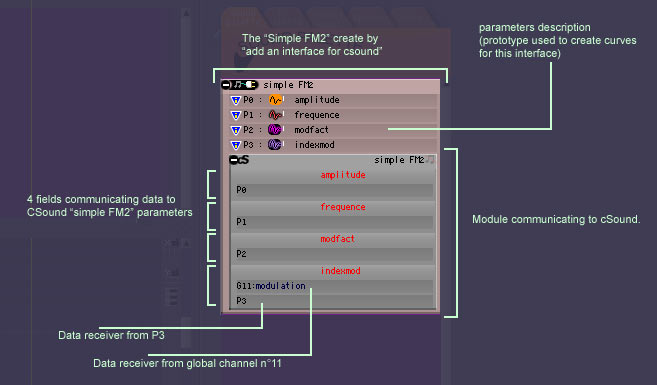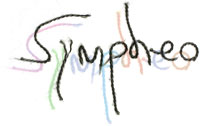
An cSound interface consists of 2 sections:
(1) The first one contains parameters description of
the interface, they're prototypes of curves, they've all the characteristics
of these ones except there's no graphic data.
(2) The second section is the interface with the external
cSound module:
It has as many fields as the cSound opcode has parameters.
Every field can contain various objects, it is the data send to cSound.
Here is the descriptions of these objects:
- The most used being the data receiver. It gets back
the data of curves intended to a parameter defined by a prototype:
- The receiver Pn gets back data from curves Pn received
by the interface, provided that prototypes of these curves exist. (n
= 0 à 24)
- The receiver Gn gets back data from global curves Gn
defined by the prototype situated in " global channels " sheet.
(n = 0 à 31)
- The receiver An gets back data from an audio channel (n = 1 to 16)
(compatible only audio rate parameter)
These objects are cumulative.
- An object is special: it is " text constant",
in some cSound opcode, sometimes a parameter is defined as being an constant
value for the all sound duration. In that case no curve can be passed
on, and only text will be accepted in the field. This text can be as well
a numerical value, a table name, a variable name, it depends mainly how
it will be use in the opcode.
